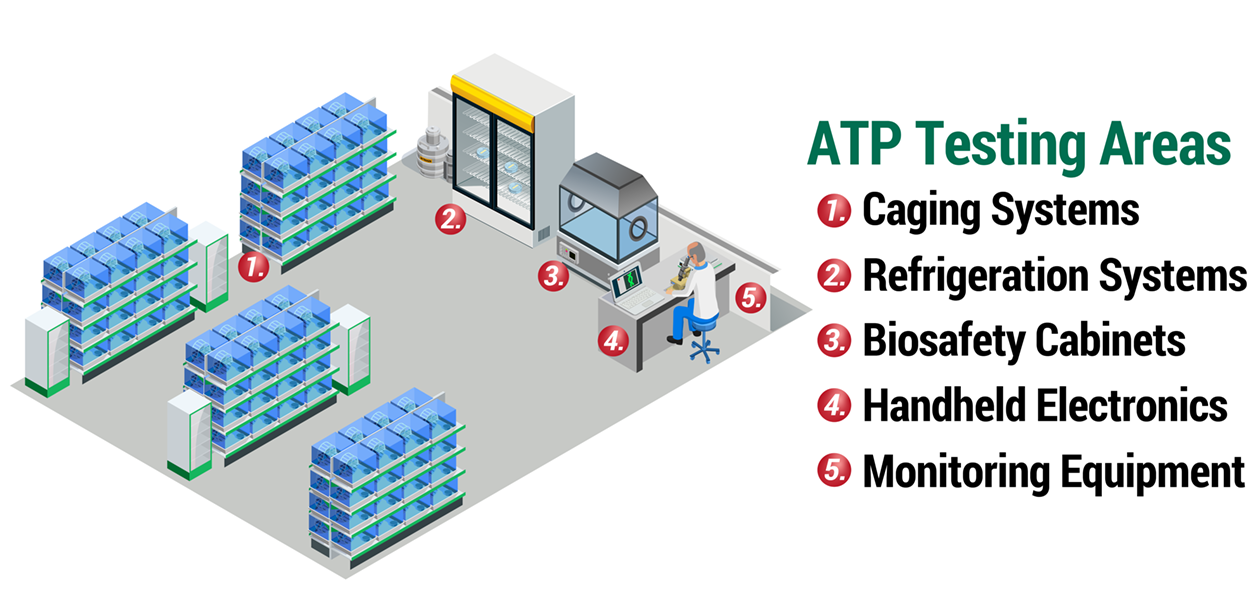What is ATP?
Adenosine triphosphate (ATP) is a chemical produced in all living cells. Its presence on a surface is an indication of organic contamination. That contamination can come from human contact, bacterial presence or some other form of organic residue. The amount of ATP remaining on a cleaned surface is a direct indication of the effectiveness of a cleaning method.
In your facility, people touch surfaces and, in the process, either add to or pick up the organic residue which can include pathogenic microbes such as Clostridium difficile, MVM, or any number of environmentally transferred organisms. For this reason, measuring ATP levels on high-touch surfaces and equipment has become the standard for at-risk facilities in determining cleanliness levels.
The AccuPoint Sampler
When ATP is collected from a surface and combined with two chemicals contained in Neogen’s AccuPoint Samplers, Luciferin and Luciferase, a chemiluminescent reaction occurs. This reaction produces light in the same way that fireflies do. The amount of light produced in the reaction is directly proportional to the amount of ATP collected from the surface. Luciferin / Luciferase + ATP = Light. This light is then measured by the AccuPoint luminometer and reported as relative light units (RLUs).



